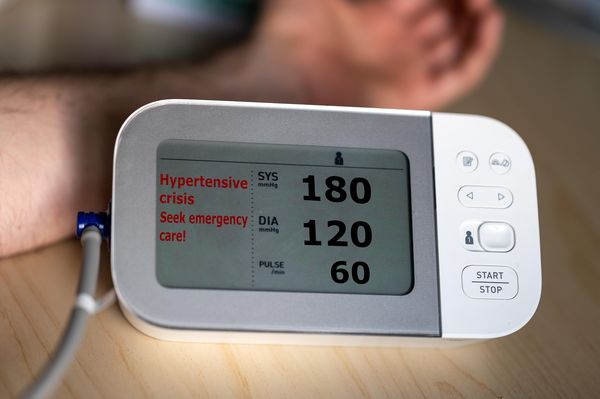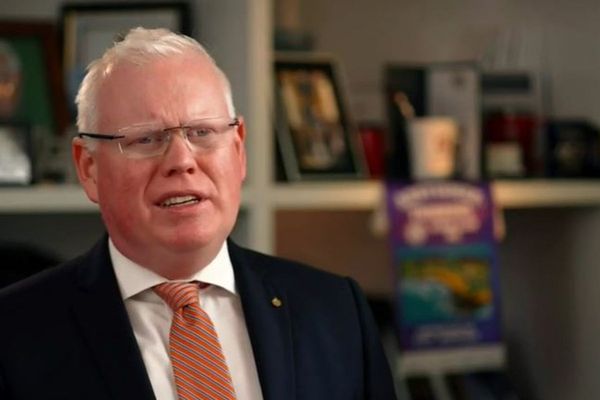When Ange Liston-McCaughley's then nine-year-old daughter was "generally unwell", she never suspected type 1 diabetes.
The mum from Victoria took Lila to the GP three times.
"On the third occasion just before we were about to go up to Queensland for a family holiday, we went to the doctor and told them she was lethargic [and] had weight loss," she said.
"The doctor basically turned around and said, 'I think you guys just really need a break and you need to go on a holiday,'" she said.
The family went on their holiday to Queensland's Gold Coast and within a day Lila was rushed to emergency — in a pram because she was unable to walk.
Type 1 diabetes is an autoimmune disease in which the pancreas stops producing insulin.
There is no cause or cure and the common warning signs — thirst, increased urination, losing weight, tiredness — are often missed or overlooked.
When type 1 diabetes is not diagnosed or treated, the potentially fatal complication diabetic ketoacidosis (DKA) develops.
Lila "fought to survive" DKA for 10 days in ICU at the Gold Coast University Hospital.
"I just knew something was not right with my daughter. I just couldn't pinpoint what it was," Ms Liston-McCaughley said.
"That DKA episode for us as parents and for her has had a traumatic impact, it is like a post-traumatic stress disorder that you live with."
'Unacceptably high' DKA rates
Townsville paediatric endocrinologist Jason Yates said one in two children in Queensland were in DKA at the time of their diagnosis.
"That rate should be 15 per cent so the fact that we're 47 per cent is unacceptably high," Dr Yates said.
Dr Yates is the clinical lead on the Queensland campaign DKA: Diabetes, Know the Signs, Ask.
Its goal is to educate doctors, teachers and parents about recognising the signs of type 1 diabetes early to reduce the prevalence of DKA.
"With DKA, that trauma lasts," he said.
"The problem with DKA is it causes swelling of the brain as one of its side effects … and if you get that in your first diagnosis of diabetes, about a third — up to a half — can die from that side effect.
"But the more worrying thing is that of those who survive, half of them will have some form of neurological disability secondary to [diabetes]."
It takes a community
Dr Yates said Australian and international studies had shown a lack of awareness about type 1 diabetes among the medical profession and the community.
He said feedback so far indicated the campaign was changing that.
"They [school-based nurses] were aware of at least a couple of cases where a teacher flagged with a parent because of the campaign material and we believe that led to an early diagnosis of diabetes.
There has also been increased education and "red flags" for GPs through their online tool Health Pathways.
"It's all very well to put it in the diabetes section but you've actually got to be thinking diabetes to click there," Dr Yates said.
"If they've got the kid who comes in, who's peeing more frequently, one of the common misdiagnoses is UTI [urinary tract infection], so now we'll be saying, 'If you do a urine test, make sure you check the glucose at the same time.'"
Dr Yates said the campaign material was also being adapted for Indigenous and multicultural communities.
Adults get it too
Diabetes Australia said of the more than 3,800 people diagnosed in the past year, more than half of those were aged over 30.
Karina Risk, 39, is one of them.
After googling her symptoms — insatiable thirst, relentless hunger and losing 10 kilograms in a week — the mother-of-two suspected type 1 diabetes.
She went to the emergency department a week later, breathless and unable to see, and was admitted to intensive care for six days.
As is the case for many type 1 diabetics, the disease is not in her family.
She said it would have been less stressful to be diagnosed in the early stages of the disease rather than battle life-threatening DKA.
"My children having to go through it and not understanding … that was quite scary for them.
"Whereas if I had [been diagnosed] at the doctor beforehand I think the process would've been a lot smoother.
"The more I talk about it, the more I realise that people have no clue about it … I've discovered that there are a lot more people affected by it than what you expect."
Push for prevention
Ms Liston-McCaughley, the founder of the Type 1 Foundation charity, said while type 1 diabetes was not preventable, the number of newly diagnosed cases ending up in DKA could be reduced or avoided.
She said in order for that to happen, greater awareness among parents, the community and the medical profession was crucial.
"We need to do something like a finger prick with families or adults who attend [a doctor] multiple times displaying symptoms that aren't getting better.
"A simple finger prick is two seconds and it could really save someone from going into that DKA episode."







